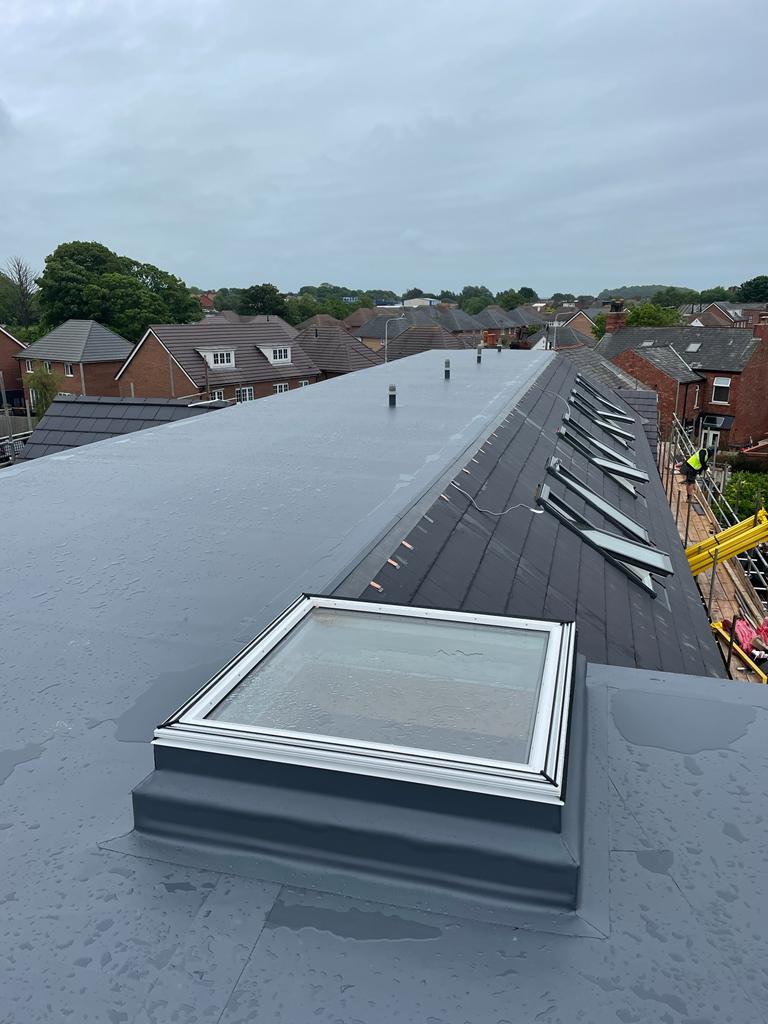With households and workplaces both aiming to reduce energy consumption, and keep the cost of energy bills down, thermal efficiency as part of building design has never been more important. One of the biggest factors for reducing heat loss in the winter, and for preventing heat gain in the summer, is the construction of the roof itself. Single ply roofing options are highly effective in terms of practical and functional factors, but can single ply roofing reduce energy bills? And how can a single ply roof system impact thermal efficiency?
So, how can single ply roofing reduce energy bills?
Single ply roofing can have a significant and positive impact on thermal efficiency with different areas of the design and the roof build up playing an important role in reducing heat transfer and ultimately reducing the cost of energy bills. These influential factors include:
- A warm roof design
- Thermal efficiency and U values
- UV resistance and reflection
Warm roof design
A single ply roofing system is a warm roof design, and this refers to the construction method. For a warm roof, the insulation is positioned above the roof deck, underneath the waterproof and weatherproof membrane. This contrasts with a cold roof build up, which positions the insulation within the ceiling joints or attic space.
In a warm roof design, the insulation layer creates a highly effective thermal barrier that can prevent heat from being lost through the roof, leading to potential energy savings and reduced energy bills. This insulation layer also prevents cold air from infiltrating during warmer months, and as a result, the building requires less energy for heating, leading to reduced energy consumption.
The insulation layer in a warm roof design also acts as a barrier against thermal bridging. This is the transfer of heat through structural elements, such as rafters or trusses. This reduces the loss of heat through the roof and maintains a more consistent indoor temperature.
Thermal efficiency and U values
Single ply roofing systems can provide a high standard of thermal efficiency in a variety of ways, including:
- Insulation: As discussed above, single-ply roofs can be installed with highly effective insulation materials and processes to prevent thermal bridging and to maintain a steady internal temperature at all times of the year.
- Reflectivity: Many single-ply membranes have reflective surfaces that can reflect a significant portion of the sun’s heat, preventing it from being absorbed into the building. This reduces the need for cooling systems in the summer months and can reduce energy bills for cooling.
- Reduced air leakage: The installation processes involved in single-ply roofing systems ensure that the full roofing system is air tight, preventing any air leakage. This allows the roofing system to be highly energy efficient, reducing energy bill costs by preventing the loss or gain of heat through air infiltration.
While single ply roofing can be highly thermally efficient, choosing the right materials and components for the roofing build up is essential for maintaining that high level of thermal efficiency. This is where U Values can be very important. The U Value is a measurement formed from the rate that heat can transfer through a structure, divided by the difference in temperature across the structure, to measure thermal efficiency directly. As a result, it’s important to choose insulation for a single ply roof that has a low U Value corresponding to a high level of thermal efficiency. Recently building regulations regarding U Values have changed and you can find out more about this in our dedicated guide.
UV resistance surface
Finally, single ply membranes are well known for their high level of UV resistance, which can help improve energy efficiency by preventing any degradation that UV rays can cause. This is important because over time many roof systems can break down under regular and prolonged exposure to the sun, which leads to cracks and surface damage but also results in reduced insulation properties too.
In addition to providing a resistant surface, single ply membranes can also be reflective too. This means that the roof can reflect the UV rays, dramatically reducing the amount of heat absorbed by the roof system, and decreasing the demand for cooling within the building. This helps to improve the overall thermal efficiency of the building, reducing energy consumption and costs associated with cooling.
Professional installation for your single ply roof
While the components and structure of the single ply roof itself play a vital role in thermal efficiency, professional installation is essential to ensure an airtight and compliant roof. Why not get in touch with the experts here at Enviroply Roofing today to find out more about what we offer for your new commercial, residential or industrial roofing installation?

